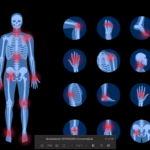Magdalena “Maggie” Cadet, MD, a rheumatologist in New York City, remembers learning about the relationship between physical activity and bone health at a young age. She was 5 years old when she first began taking ballet, jazz and tap-dancing lessons. At 9, she became a competitive figure skater and practiced both dance and ice skating…









